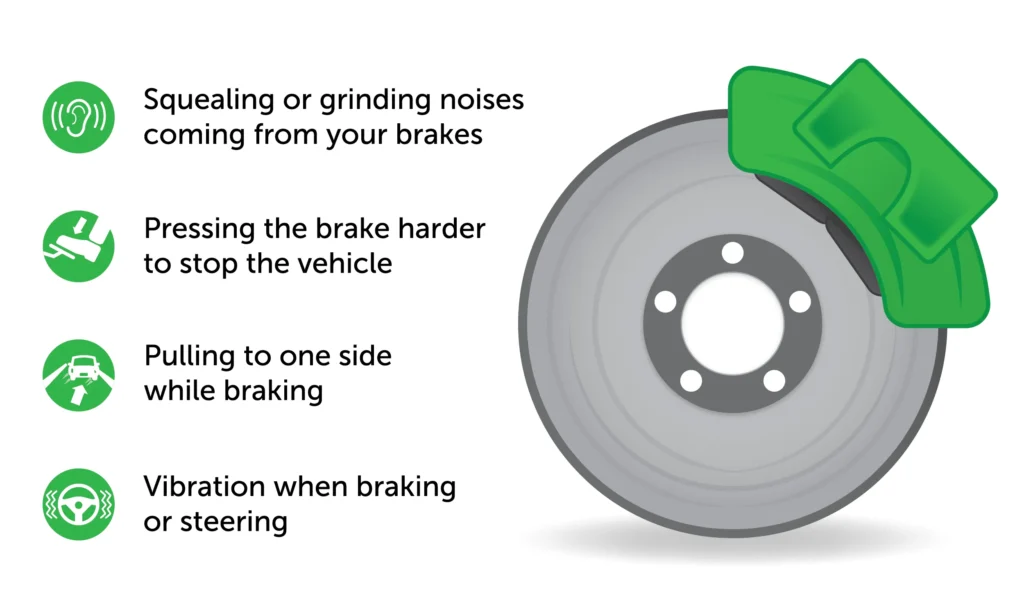Brake Repair: Signs Your Car Needs New Pads & When to Replace Them
Your brake system is one of the most important safety features of your car. Worn-out brake pads can lead to longer stopping distances, reduced braking efficiency, and potential accidents. But how do you know when it’s time for a brake pad replacement?
In this guide, we’ll cover the top signs of worn brake pads, when to replace them, and how regular brake maintenance keeps you safe.
Top Signs Your Brake Pads Need Replacement
1️⃣ Squeaking or Squealing Noises
🔎 Why It Happens: Brake pads have wear indicators that create a high-pitched squeal when they get too thin.
✅ Fix: If you hear squeaking or squealing while braking, it’s time for an inspection and possible pad replacement.
2️⃣ Grinding Sounds When Braking
🔎 Why It Happens: A metal-on-metal grinding noise means your brake pads are completely worn out, and the rotor is being damaged.
🚨 Warning: Continuing to drive like this can lead to expensive rotor and caliper damage.
✅ Fix: Replace the brake pads immediately and inspect the rotors for wear.
3️⃣ Longer Stopping Distance
🔎 Why It Happens: If your car takes longer to stop, your brake pads might be worn too thin to create proper friction.
✅ Fix: Don’t wait—delayed stopping puts you at risk of an accident. Have your brakes checked ASAP.
4️⃣ Brake Pedal Feels Soft or Spongy
🔎 Why It Happens: A spongy brake pedal can indicate air in the brake lines or a brake fluid leak.
✅ Fix: Get a brake fluid flush and brake system inspection to ensure safe braking performance.
5️⃣ Vibration or Pulsating Brake Pedal
🔎 Why It Happens: Warped rotors cause a shaking or pulsing sensation when you press the brake pedal.
✅ Fix: Resurface or replace damaged rotors and inspect the brake system for additional wear.
6️⃣ ABS Warning Light Is On
🔎 Why It Happens: The Anti-Lock Braking System (ABS) warning light means there’s an issue with your braking system, possibly worn pads or low brake fluid.
✅ Fix: Use a diagnostic scan tool to check for error codes and schedule a brake system inspection.
When Should You Replace Brake Pads?
🛑 General Guidelines for Brake Pad Replacement:
- Every 30,000–70,000 miles (varies by vehicle and driving habits)
- Check brake pad thickness every oil change
- Replace pads before they reach 3mm thickness
🚗 Factors That Affect Brake Pad Lifespan:
- Frequent stop-and-go traffic
- Driving in hilly or mountainous areas
- Using lower-quality brake pads
- Aggressive braking habits
What Happens If You Ignore Worn Brake Pads?
🚨 Ignoring brake pad wear can lead to serious damage and costly repairs, including:
- Damaged Rotors & Calipers – Metal-to-metal contact destroys these parts.
- Brake Failure Risks – Severely worn pads reduce stopping power, increasing accident risk.
- Higher Repair Costs – Replacing rotors and calipers is far more expensive than routine pad replacements.
Avoid expensive repairs—get your brake pads inspected at the first sign of wear!
Need Brake Repairs? Contact Onsite Auto Services!
🚗 Are your brakes squeaking, grinding, or feeling unresponsive? At Onsite Auto Services, we provide expert brake pad replacements, rotor resurfacing, and full brake system repairs to keep you safe on the road.
📞 Call us today or schedule an appointment online for professional brake repair services near you!
“Are your brakes squeaking or taking longer to stop? Learn the top signs your car needs new brake pads and when to get them replaced. Read now!”
BrakeRepair #CarBrakes #BrakePads #AutoRepair #CarMaintenance #BrakeReplacement #VehicleSafety #ABSSystem #MechanicNearMe #CarRepair

